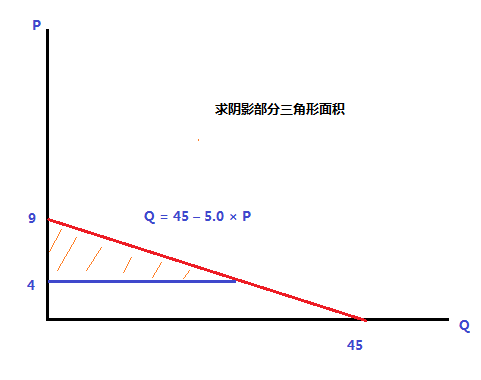The monthly demand curve for playing tennis at a particular club is given by the following equation: PTennis Match = 9 – 0.20 × QTennis Match. The club currently charges members $4.00 to play a match but is considering adding a membership fee. If the club continues to charge the same per play charge, the most that it will be able to charge as a membership fee is closest to:
A $62.50.
B $162.50.
C $40.00.
A is correct. On rearrangement, the demand function is:
QTennis Match = 45 – 5.0 × PTennis Match
The number of matches played per month at $4.00/match = 45 – 5.0 × 4.00 = 25
The y-intercept of the demand curve occurs when Q = 0: P = 9
The x-intercept of the demand curve occurs when P = 0: Q = 45
In addition to the per play charge, the club will be able to charge the consumer surplus: the area under the demand curve above the current price per match to a total of 25 matches: 0.5 × ($9.00 – $4.00) × 25 = $62.50.
请老师解读下这道题,是从消费者剩余和价格歧视的角度思考吗?




